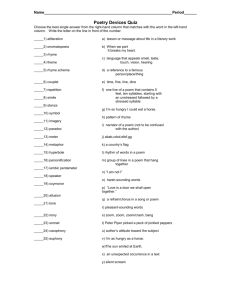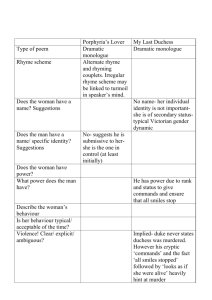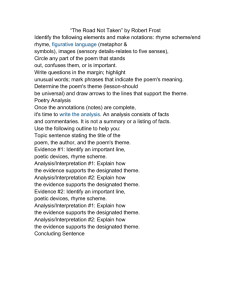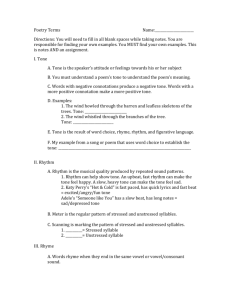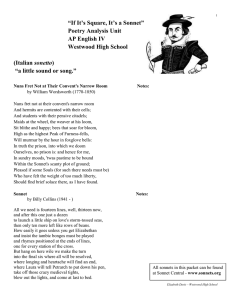English 10 Literary Devices (Poetic Terms) and Forms
advertisement
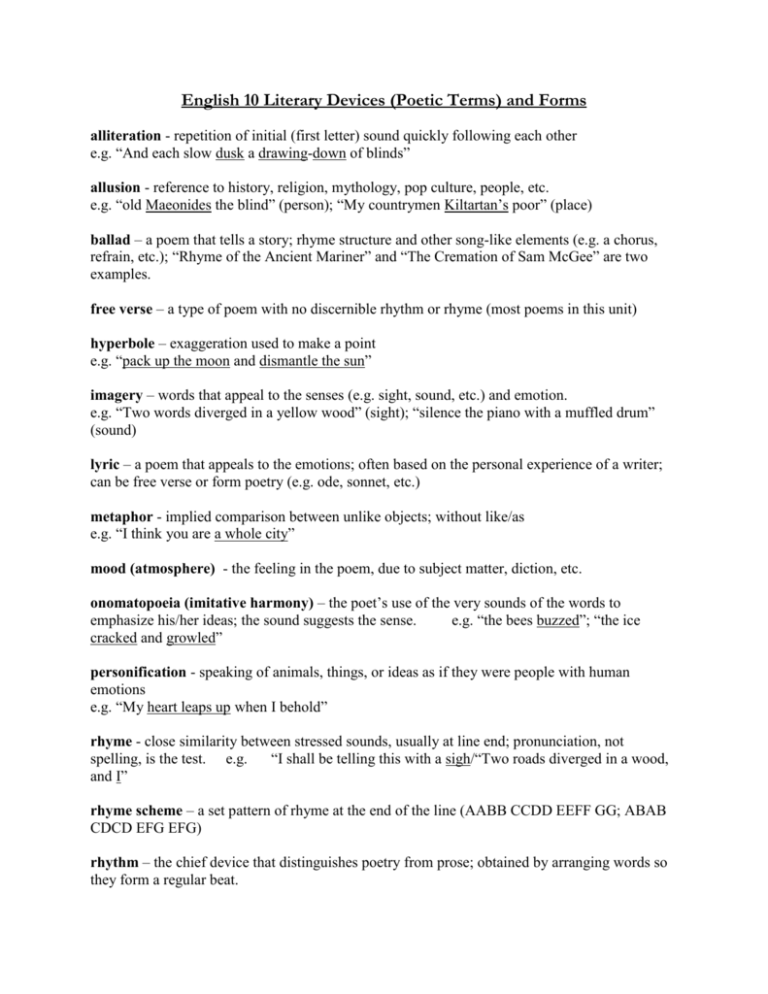
English 10 Literary Devices (Poetic Terms) and Forms alliteration - repetition of initial (first letter) sound quickly following each other e.g. “And each slow dusk a drawing-down of blinds” allusion - reference to history, religion, mythology, pop culture, people, etc. e.g. “old Maeonides the blind” (person); “My countrymen Kiltartan’s poor” (place) ballad – a poem that tells a story; rhyme structure and other song-like elements (e.g. a chorus, refrain, etc.); “Rhyme of the Ancient Mariner” and “The Cremation of Sam McGee” are two examples. free verse – a type of poem with no discernible rhythm or rhyme (most poems in this unit) hyperbole – exaggeration used to make a point e.g. “pack up the moon and dismantle the sun” imagery – words that appeal to the senses (e.g. sight, sound, etc.) and emotion. e.g. “Two words diverged in a yellow wood” (sight); “silence the piano with a muffled drum” (sound) lyric – a poem that appeals to the emotions; often based on the personal experience of a writer; can be free verse or form poetry (e.g. ode, sonnet, etc.) metaphor - implied comparison between unlike objects; without like/as e.g. “I think you are a whole city” mood (atmosphere) - the feeling in the poem, due to subject matter, diction, etc. onomatopoeia (imitative harmony) – the poet’s use of the very sounds of the words to emphasize his/her ideas; the sound suggests the sense. e.g. “the bees buzzed”; “the ice cracked and growled” personification - speaking of animals, things, or ideas as if they were people with human emotions e.g. “My heart leaps up when I behold” rhyme - close similarity between stressed sounds, usually at line end; pronunciation, not spelling, is the test. e.g. “I shall be telling this with a sigh/“Two roads diverged in a wood, and I” rhyme scheme – a set pattern of rhyme at the end of the line (AABB CCDD EEFF GG; ABAB CDCD EFG EFG) rhythm – the chief device that distinguishes poetry from prose; obtained by arranging words so they form a regular beat. simile - directly expressed comparison using like/as e.g. “took off like innocent fugitives” sonnet - a 14-line poem with 3 quatrains and 1 couplet (English); Italian is similar but different rhyme e.g. Shakespeare’s Sonnet 18 ( “Shall I Compare Thee to a Summer’s Day?”) speaker – the “narrator” in the poem NOT the author stanza – the “paragraph” of the poem symbolism – the use of symbols to represent abstract ideas; can be colours, characters, settings, etc. theme – the implied message in the poem (i.e. author doesn’t state it directly; the reader infers the theme). e.g. One theme of “The Road Not Taken” is that it is important to choose our own path in life. tone – the author’s attitude towards the subject matter is the tone; expressed as an adjective e.g. The tone of “Letter to Sir John A. MacDonald” is angry and bitter. Additional notes:




